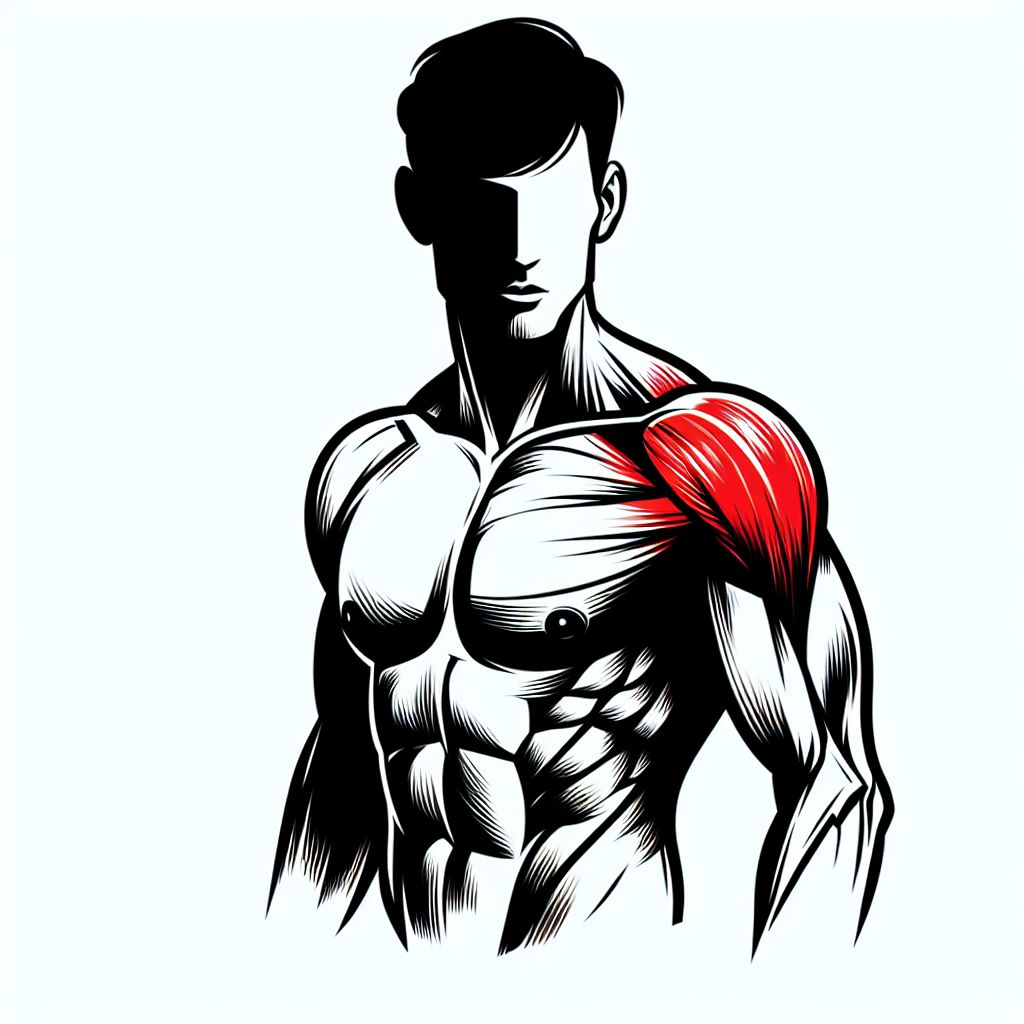Deutsch: Schulter / Español: Hombro / Português: Ombro / Français: Epaule / Italiano: Spalla
In fitness, the shoulder refers to the complex joint that connects the upper arm (humerus) to the torso. It is a crucial part of the body's musculoskeletal system and plays a significant role in various exercises and movements. This article explores the meaning of the shoulder in the fitness context, its application areas, well-known examples, potential risks, and provides sentences illustrating its usage in different grammatical forms.
Application Areas

-
Strength Training: Shoulders are targeted in strength-training exercises like shoulder presses, lateral raises, and front raises, which aim to build shoulder muscles (deltoids).
-
Mobility and Flexibility: Shoulder mobility exercises, such as arm circles and stretches, improve range of motion and flexibility.
-
Functional Movements: Everyday activities like lifting objects, reaching overhead, and pushing or pulling involve shoulder muscles.
-
Balance and Stability: Strong shoulders contribute to upper body stability and balance, essential for activities like yoga and Pilates.
-
Injury Rehabilitation: Physical therapists often include shoulder exercises in rehabilitation programs to address injuries or surgery recovery.
National and International Examples
-
Overhead Press: The overhead press is a common exercise in strength training that targets the shoulders and upper body. It is practiced globally.
-
Swimming: Swimming relies heavily on shoulder strength and flexibility for effective strokes and endurance.
-
Handstands (Yoga and Gymnastics): Achieving and maintaining a handstand requires excellent shoulder strength and balance. This skill is practiced worldwide.
Risks
-
Shoulder Injuries: Overuse, improper form, or heavy weights in shoulder exercises can lead to injuries like strains, rotator cuff tears, or Impingement.
-
Poor Posture: Weak shoulder muscles can contribute to poor posture, leading to musculoskeletal issues.
-
Limited Range of Motion: Lack of shoulder mobility and flexibility can limit movement and increase the risk of injuries.
History and Legal Basics
Throughout history, the shoulder's significance in human movement and physical activities has been recognized. From early sports like archery and javelin throwing to modern weightlifting and fitness routines, strong shoulders have been integral. In the fitness industry, there are no specific legal regulations related to shoulder exercises. However, fitness professionals are expected to guide clients safely and effectively.
Examples of Sentences
- Her shoulder strength allowed her to perform multiple reps of the overhead press.
- Proper shoulder mobility is crucial for a complete range of motion in your arms.
- His shoulders felt sore after an intense swimming workout.
- The physical therapist prescribed shoulder stretches to improve flexibility.
Similar Concepts and Synonyms
- Deltoids: Refers to the specific muscles of the shoulders.
- Upper Body: The shoulder region is often included when discussing upper-body exercises and strength.
Weblinks
- fashion-glossary.com: 'Shoulder' in the fashion-glossary.com
- travel-glossary.com: 'Shoulder' in the travel-glossary.com
- medizin-und-kosmetik.de: 'Schulter' im Lexikon von medizin-und-kosmetik.de (German)
Articles with 'Shoulder' in the title
- Shoulder blade: Shoulder blade: The shoulder blade (also known as the scapula) is a flat, triangular Bone located on the upper back that plays a central role in shoulder mobility and stability
Summary
In the fitness context, the shoulder is a vital anatomical part responsible for various upper body movements and exercises. Its strength, mobility, and flexibility are essential for everyday activities, sports, and fitness routines. To prevent injuries and improve overall fitness, it's important to incorporate shoulder exercises into your workout Regimen and ensure proper form and technique.
--
Related Articles to the term 'Shoulder' | |
| 'Control' | ■■■■■■■■■■ |
| Control in the fitness context refers to the ability to regulate and manage various aspects of one\'s . . . Read More | |
| 'Upper body strength' | ■■■■■■■ |
| Upper body strength refers to the power and endurance of the muscles in the upper half of the body, including . . . Read More | |
| 'Upper arm bone' | ■■■■■■■ |
| Upper arm bone: Upper arm Bone in the Fitness context refers to the humerus, the long bone that extends . . . Read More | |
| 'Deltoid' | ■■■■■■ |
| Deltoid is a large, triangular muscle located on the uppermost part of the arm and the top of the shoulder. . . . Read More | |
| 'Costochondritis' | ■■■■■ |
| Costochondritis in the fitness context refers to the inflammation of the cartilage that connects the . . . Read More | |
| 'Pectoralis major' | ■■■■■ |
| Pectoralis major: The pectoralis major is a large, fan-shaped muscle located on the chest. It plays a . . . Read More | |
| 'Scapula' | ■■■■■ |
| Scapula in the Fitness context refers to the triangular-shaped Bone commonly known as the Shoulder blade. . . . Read More | |
| 'Glenoid cavity' | ■■■ |
| Glenoid cavity refers to the part of the scapula (shoulder blade) that forms the socket for the ball-and-socket . . . Read More | |
| 'Bending' | ■■■ |
| Bending in the context of fitness refers to movements where a part of the Body, usually the torso or . . . Read More | |
| 'Injury' | ■■ |
| Injury in the fitness context refers to any physical harm or damage that occurs to the body as a Result . . . Read More | |
